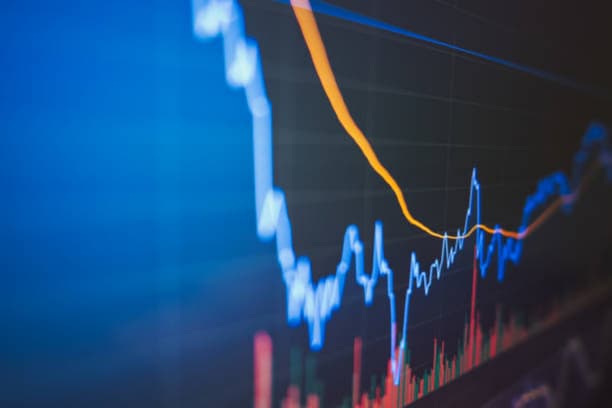How do exchange fees affect the strategies of day traders?
In cryptocurrency trading, day traders often need to get in and out of the market quickly and look for short-term profits. The impact of exchange fees on day trading strategies is often overlooked. The level of fees has a direct impact on trading costs, profits, and overall strategy design. In this article, we will take a closer look at how exchange fees affect the decisions of day traders and provide some practical advice to help you make a more informed choice when selecting an exchange. Whether you are a novice or an experienced trader, this article will provide you with valuable insights.

Explanation of Exchange Fee Structure
Before we dive into a discussion of how this affects intraday trading strategies, it's important to first understand the basic structure of exchange fees. Most cryptocurrency exchanges usually have a two-part fee: the Maker Fee and the Taker Fee.
Order Entry Fee is the fee you pay for providing liquidity, i.e. when you place an order in the market and wait for it to be filled, the exchange charges a percentage of that amount. An order-taking fee is when you buy or sell directly at the market price and it is filled immediately, which incurs a higher fee.
Most exchanges offer different commission discounts based on a user's trading volume or membership level. For example, some exchanges offer discounts to active traders or more favorable rebate programs. Therefore, choosing the right exchange fee structure can reduce costs and increase profitability for day traders.
Impact of Handling Fees on Intraday Trading Strategies
For day traders, the frequency of trades is part of daily operations and therefore the commission becomes a key factor affecting the strategy. If you choose an exchange that charges a high commission, the cost of entering and exiting the market will increase each time, which may consume all of your profits in the short term. For example, if an exchange charges a 0.1% pending order fee and a 0.2% order taking fee, a day trader with $1,000 in capital per trade could lose $2 to $3 on just one trade.
Such transaction costs are particularly evident in high-frequency intraday trading strategies, where fees further compress profits with each additional trade. Therefore, choosing a low-fee exchange is crucial for day traders, especially if you are trading with higher leverage, where the impact of fees can be magnified, further reducing your rate of return.
The importance of choosing a low-fee exchange
Choosing a low-fee exchange is certainly an effective way for day traders to increase their long-term profitability. Here are a few factors to consider when choosing a low-fee exchange:
Transparent fee structure: Choose an exchange with a clear and simple fee structure to avoid cost overestimation due to complex calculations.
Membership tier system: Some exchanges offer membership tier benefits based on trading volume or platform currency holdings, which can significantly reduce trading fees.
Regular Promotions and Rebate Programs: For example, OKX offers rebate programs for active traders, which can help day traders further reduce their commission expenses. These rebate programs help to reduce trading costs, especially in high frequency trading, and the additional revenue from rebates can significantly improve the profitability of the overall strategy.
Practical example: how to use low handling fees to increase trading profits
As an example, let's say you are trading intraday on an exchange with 10 trades per day of $1,000 each. In this case, if the exchange charges an order taking fee of 0.2%, then the total daily commission expense would be $2 (1,000 x 0.002). If you choose an exchange that offers a low commission or rebate program, assuming a commission of 0.1% or less, then the commission per trade would be reduced to $1, which would reduce your daily commission expense to $10, and your monthly commission expense could be reduced to over $30.
If the exchange also has a rebate program, such as a rebate of the 30% commission, then your actual commission expense will be further reduced, increasing your overall trading profits. Such a strategy not only reduces costs, but also increases the long-term profitability of trading.
The Linkage Effect of Leverage and Handling Charges
Leveraged trading is a common strategy used by day traders, especially in the cryptocurrency market, where volatility is high and leveraged trading can magnify profits. The linkage between leveraged trading and fees also requires special attention. When leveraged trading is used, the impact of fees is magnified.
For example, if you are trading with 2x leverage, you are effectively doubling your capital exposure. If the fee is not reduced, this means that the fee expense per trade will double, putting even more pressure on day traders' margins.
Therefore, choosing an exchange with low commission is especially important for leveraged traders, as it reduces unnecessary costs and protects your profit margins. Remember, proper control of your commission expenses is one of the keys to successful day trading.

How to choose the right rebate program
In addition to choosing an exchange with low commission fees, rebate programs are also an effective tool for day traders to reduce their trading costs. Many exchanges, in order to attract active traders, offer rebate policies that can be adjusted according to the user's trading volume, the number of platform coins held, or the level of membership.
For example, Ouyi Exchange offers a commission policy that reduces commission based on trading volume and the number of OKBs held. For day traders, this can significantly reduce trading costs and increase profitability. Choosing the right commission program and adjusting it according to your trading habits is another way to increase your profits.
Frequently Asked Questions Q&A
Q1: How can I minimize the impact of handling fees if I am doing high-frequency trading?
A1: For high-frequency traders, choosing a low-fee exchange is a must. Choose an exchange that offers a membership level discount or a rebate program, which can significantly reduce the handling fee per trade. Choosing an exchange that offers a discount on pending orders can also reduce trading costs.
Q2: How does the handling fee affect my overall profitability?
A2: Handling fees have a direct impact on the profitability of each trade, especially for day traders with high frequency operations. Even a small commission can add up to a large cost and reduce your profitability. Therefore, choosing an exchange with a low commission can effectively increase your overall profitability.
Q3: How does the handling fee affect my risk management when using leveraged trading?
A3: Leveraged trading magnifies your profits, but it also magnifies the impact of fees. If the commission is high, it may quickly consume the profit brought by leveraged trading. Therefore, choosing a low-fee exchange and setting the leverage ratio carefully are important tools for day traders to manage their risks.














